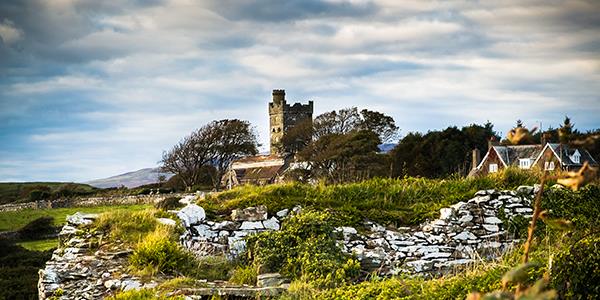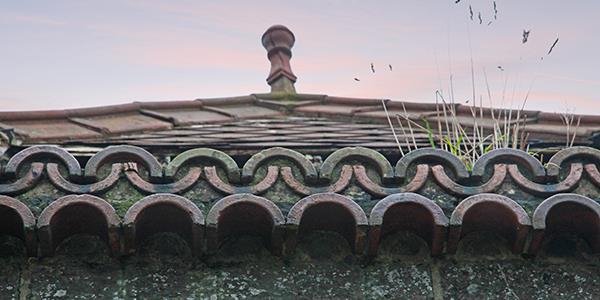
The first steps have been taken to turn the Coo Palace, also known as the Corseyard Farm and Model Dairy, into 26 luxury holiday cottages and apartments, plus a reception and clubhouse with an indoor swimming pool.
A little history
The iconic landmark overlooking Wigtown Bay in Dumfries & Galloway was once a dairy farming facility, built by eccentric millionaire James Brown, half of Affleck & Brown, whose flagship Manchester department store was once known as ‘the Harrods of the North’. Brown used his wealth to indulge his passion for the Arts & Crafts movement, Art Nouveau and the Italianate style – and indeed the Coo Palace, built early in the 20th Century, reflects all three.

The place was built to house Brown’s small herd of 12 prize Belted Galloway cows – and from what one can still see the bovine beauties must have lived in some style: curved finials here, decorative glazed tiles there, Palladian water troughs to drink from…
Whether the herd was ever ‘productive’ is, sadly, not known; but it seems certain that the heyday of the Coo Palace was short-lived. James Brown died in 1920, and interest in the Coo Palace died with him; the family had other battles to fight, as wealthy families often do. The complex fell into disrepair, and in 1991 was A-listed by Historic Scotland in the category of ‘important buildings at risk’.

The Coo Palace underwent various changes of ownership – at various stages it was to be converted into film and TV studios, then a suite of offices, then what would have been a substantial private house – but none of the owners were able to fulfil their ambitions. And of course, as the years passed the condition of the Coo Palace became steadily worse.
Until now.
Coo Palace restoration
Overseen by JMP Architects of Lancaster, since the turn of the year a 20-strong team of builders from Ayrshire-based 3B Construction has been working to restore the Coo Palace to its former glory.

“We started with demolition, funnily enough,” says JMP partner Joel Pinnington. “Much of the roof had to be taken down in order to make the place safe for constructors to operate in. But right now the team are installing timber-frame kits for two blocks of new holiday cottages being built alongside the existing structure; the roofs should be on within the next couple of weeks.
“Then comes the fun part: working on the Coo Palace itself. At the moment we have a conservation specialist on site, conducting a series of what are called ‘historic building recordings’ – this is a Grade A-listed site, and the conservation specialist has to report back to both Historic Environment Scotland and Dumfries & Galloway Council, who will determine what can and can’t be done. It’s all about preserving as much of the Coo Palace’s character, and as many of its original features, as possible.”
Restoration work is expected to start in a few weeks. “My colleagues and I – I think the whole team – are really looking forward to it,” says Joel. “Quite apart from what the ‘powers-that-be’ say, we’re committed in any case to retaining and reusing the Coo Palace’s original features wherever and whenever we can. We’re keeping all the glazed bricks, the tiles, the stall partitions, the balustrades – all the elements that make this place unique.”
“We’ve been given two years to do this,” adds 3B site manager Kevin Marr, “but with fair weather, luck and a following wind, I reckon we’ll be finished by mid-2019. Furnishing, fixtures and fittings may take a little while, but I expect the Coo Palace to be welcoming its first holidaymakers by Christmas.
“What a place to spend the Festive Season. I envy them already!”

